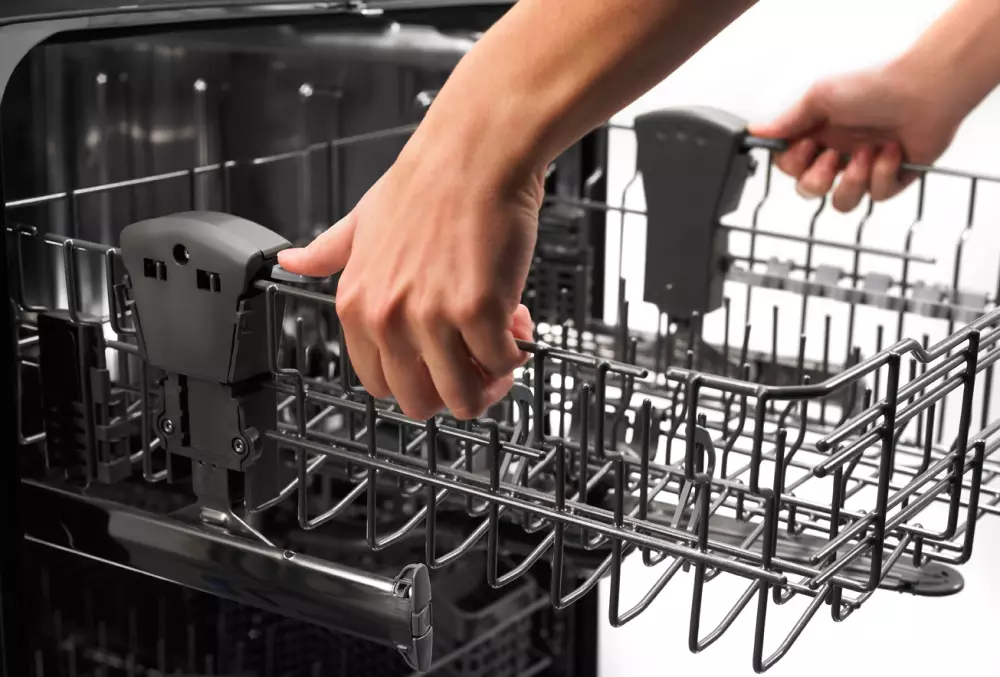How To Clean a Stainless Steel Cooktop Stove: A Detailed Guide to Make Yours Sparkle
Stainless steel appliances are a great way to make your kitchen look sleek and modern. But keeping them clean can be a challenge. If you have a stainless steel cooktop stove, you know how important it is to keep it clean. The problem is that stainless steel can be hard to keep shiny, especially if you don't use the right natural cleaning products.
But don't worry! We're here to help with our detailed guide on how to clean a stainless steel cooktop. This article will show you the best ways to keep your stainless steel stove looking new so you can enjoy cooking on it daily.
Most people must realize that a stainless steel cooktop stove is a delicate piece of equipment requiring a specific cleaning method from you or a house cleaning service. The good news is you can learn how to clean a stainless steel cooktop in just a few easy steps.
First, it's essential to understand that the surface makes your cooktop great. Stainless steel has a smooth, polished look and feels, making it popular for kitchen appliances. It's also very durable. That's why it's used on cooktops.
Unfortunately, this durability comes at a cost. Stainless steel does not absorb stains very well at all. Food and other stains will sit on your stove and never fully come off unless you take extra steps.
The good news is that plenty of products are designed specifically for cleaning stainless steel surfaces without damaging them. With these products and some elbow grease, you'll be able to make your cooktop shine and sparkle like new again in no time!
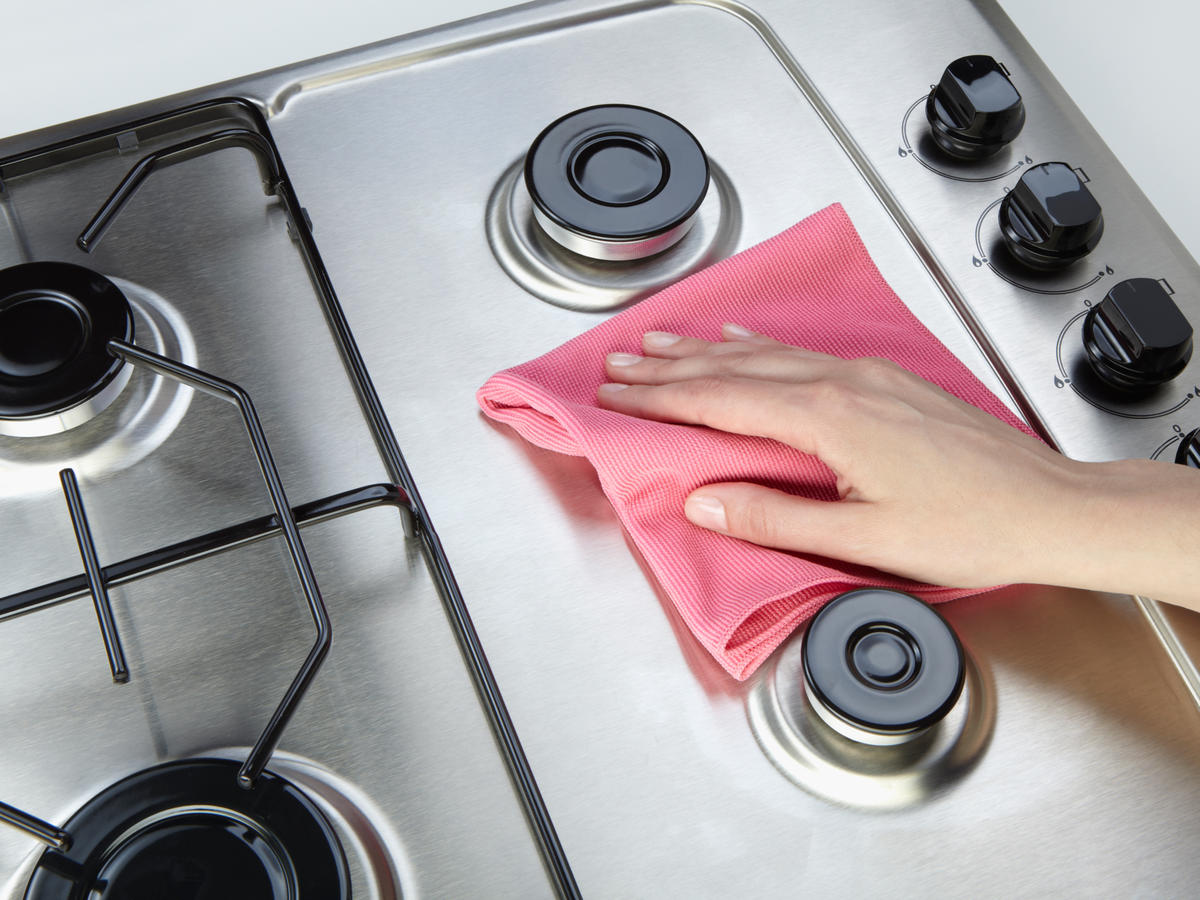
What You'll Need
Instructions
1. Remove and clean the stainless steel stove elements
Before you start the cleaning process, ensure that the stainless steel cooktop and removable parts are excellent, as you wouldn't want to touch them if they are hot. When they are already cold to be touched, remove the stove grates, burner caps, and knobs if they are removable.
The best technique to remove filth off stove top burners and grates is to soak them in warm, soapy water first. The ideal time to do this is as you wipe the surface. Keep in mind that the longer they soak, the simpler it will be to clean them. Submerge your cooktop elements in soapy water from anti-grease dish detergent in your kitchen sink or another large enough basin.
How to clean stovetop grates?
Take out the stove grates that have been sitting in soapy water. Scrub them off using a hard-bristled brush to remove the build-up before rinsing them off. Thoroughly clean the stove grates with a mildly abrasive scrubber and dish soap that fights grease. If the grease is tough to get off, soak the grates in a solution of hot water and white vinegar for a few hours before cleaning them again. Then, thoroughly rinse them off and wipe them dry.
How to clean stovetop burner caps?
Shake the burner caps while submerged to remove any debris obstructing the holes before removing them from the soapy solution. To check for obstructions, insert a toothpick or safety pin through each one. Scrub the burner caps with hot water, dish soap, and a scrubber or sponge. Rinse well to remove any detergent residue, then wipe dry using a dry towel.
How to clean stovetop knobs?
Put some liquid dish soap on an old toothbrush and apply it like you would toothpaste to brush the knobs one at a time while you remove them from the water. Make sure to clean the delicate gaps between the ridges by moving in that direction. Scrub the area below the knows using a sponge with liquid dish soap. Rinse them well, then pat them dry using a microfiber cloth or dry towel.
2. Gather Loose Debris
Get rid of the loose particles first for effective and rapid cleaning of your gas stovetop. If you skip this step and proceed with cleaning your stainless steel stove with a liquid solution or product, you might only encounter a greasy mess that will take twice the effort to clean.
A tiny broom and dustpan are ideal for cleaning up loose particles from the surface. If not, a brush or cloth will do, and you may use card paper as a makeshift dustpan.
3. Apply baking soda paste and spray vinegar
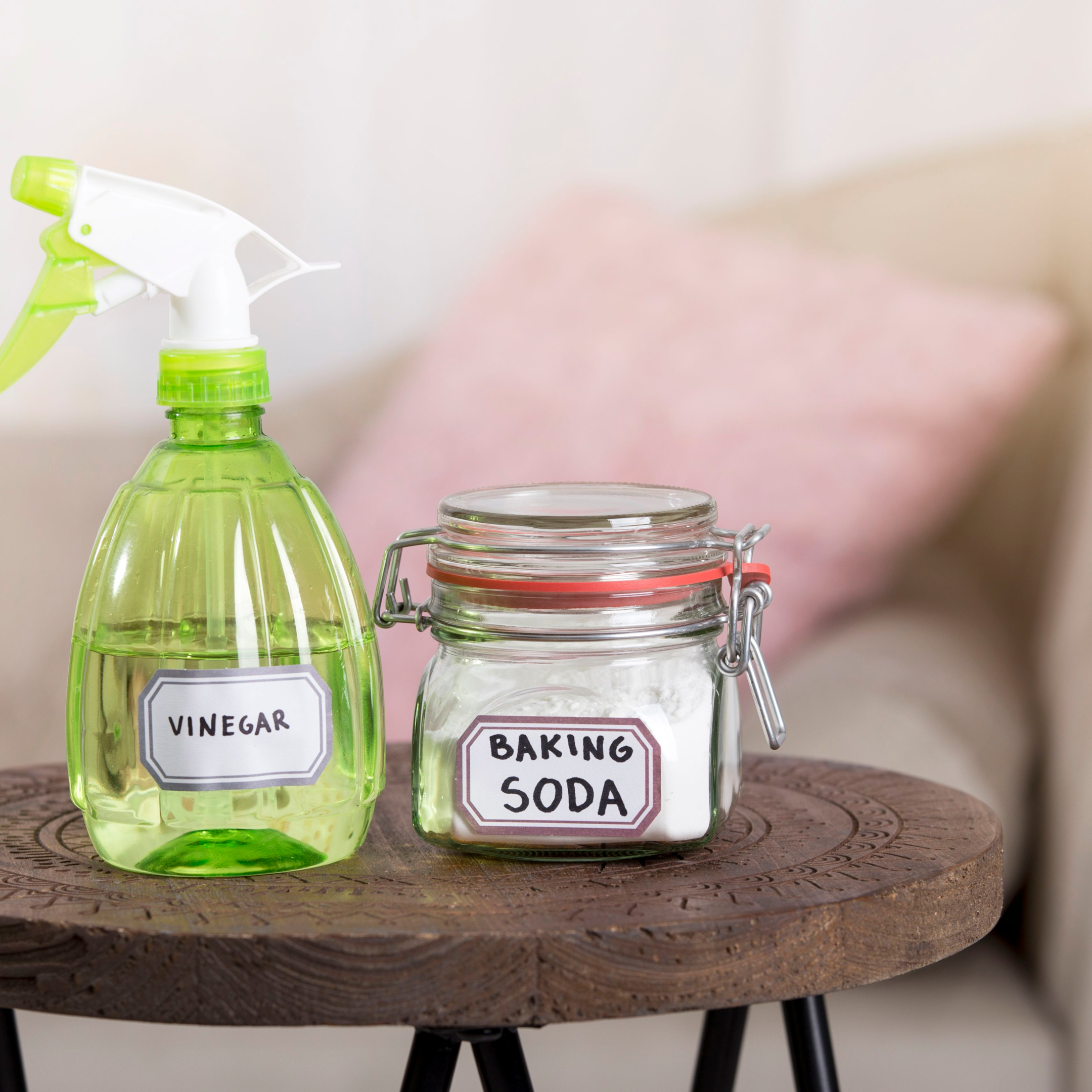
To make a baking soda paste, mix one part water with three parts baking soda. Adjust the amount you need depending on how big your stovetop is. To create a thick paste, add more water and mix it well with the baking soda. Even if baking soda works well on its own, the paste will adhere to your stainless steel stove top's surface better and be able to remove stubborn stains.
After making the baking soda paste, apply it to your stovetop surface using a soft-bristle brush or wall paintbrush if it's the only available brush you have. Leave the holes in your stove top where gas escapes uncovered to ensure that you keep the inside of your stove in good condition during the cleaning process.
Then, let the baking soda paste sit and wait for about two hours before you continue.
Next, spray white vinegar over the baking soda in a spray bottle, just enough to dampen the stovetop surface. It will create a foaming or bubbling reaction and break down the stubborn grease and grime on your stove top. Respray the stainless steel stove top with vinegar if the cleaning solution dries up. Then, let the vinegar mixture rest for about 10 to 15 minutes.
4. Wipe and scrub your stove top
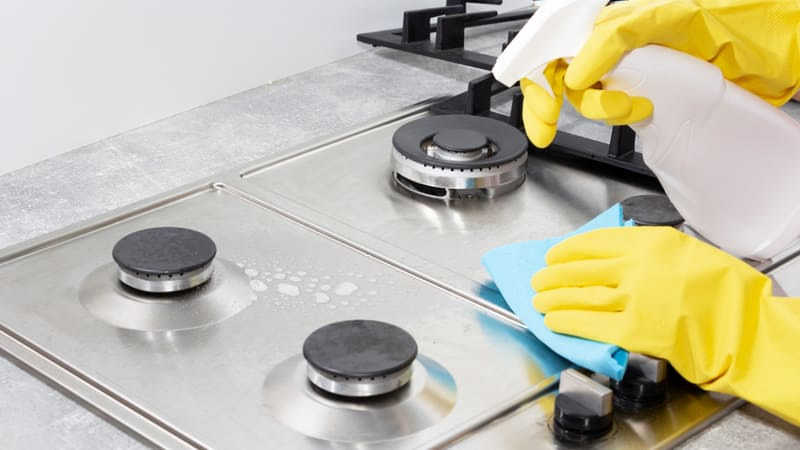
Cleaning your stainless steel stove top should be as simple as wiping it off with a kitchen towel or a damp cloth or sponge once the baking soda paste and vinegar mixture has finished their work. It will involve removing the grease from the kitchen that the cleaning agent has absorbed.
Repeat this procedure if the stains refuse to go. Next, use a non-abrasive scrubber dampened in a solution that combines equal parts of warm water and white vinegar to rub and wipe the remaining portions of the stovetop surface.
5. Dry off your stove top
Once the result satisfies you, wipe and dry off the surface of your stove top using a kitchen towel to ensure water spots are removed from the appliance. You can add a few drops of lemon oil or olive oil to the stove top surface and dry it with a microfiber cloth or paper towel. Then, reinstall the freshly cleaned stovetop components on your gas stove.
Enjoy Cooking on Your Clean Stainless Steel Appliances!
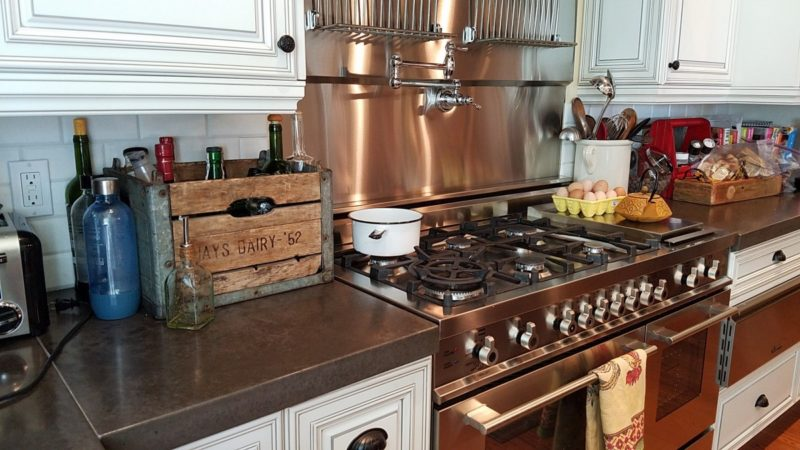
We hope you enjoyed this guide. We know that cleaning a stainless steel cooktop stove can be a daunting task, but we also know that you'll feel great once you've done it. You'll get to enjoy cooking on your clean stainless steel appliances and will be able to see the results of your hard work in all their shiny glory. Good luck!
Visit our blog to learn more valuable cleaning guides to keep your kitchen sparkling clean!
FAQs
Does vinegar damage stainless steel?
No, vinegar does not damage stainless steel. Vinegar is safe when cleaning stainless steel appliances as it can help remove oil, grease stains, and grime.
However, don't let your stainless steel stove soak in vinegar solutions long-term because extended exposure to vinegar could damage your appliances.
Does baking soda damage stainless steel?
Using baking soda to clean your stainless steel appliances will not cause any damage to them. Baking soda is a powerful cleaning agent and all-purpose cleaner that can dissolve dirt and grease effortlessly.
This purely natural cleaning product may be slightly abrasive, but it won't harm your stainless steel, and it will assist in removing stubborn stains.
What should you not use on stainless steel?
Stainless steel is a versatile and durable material, but it is also vulnerable. You should not use these cleaning tools and cleaners on your stainless steel stove because they may scratch the steel surface, cause unnecessary stains, or dull the finish.
- Harsh abrasives like steel brushes
- Scouring powders
- Steel wool
- Bleach and other chlorine products
- Glass cleaners with ammonia content
- Oven cleaners
What causes discoloration on stainless steel?
The most common cause of discolouration on stainless steel is hard water stains. Water stains and streaks are caused by hard water deposits that form when water evaporates from the surface of stainless steel. The mineral content in the water leaves behind deposits on the steel surface that look like white or brown spots.
Using abrasive chemicals such as salt, chlorides, and bleach to clean your stainless steel appliance can also cause damage and rapid discolouration on your stainless steel cooktops.
